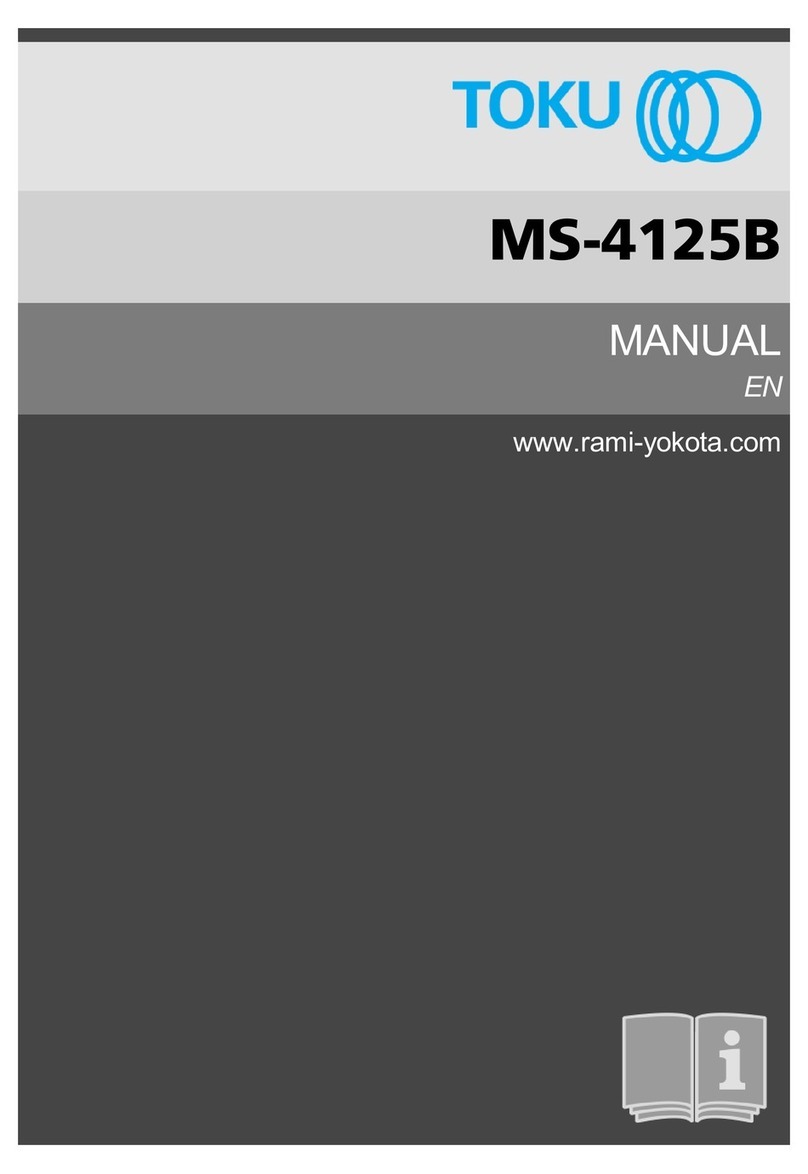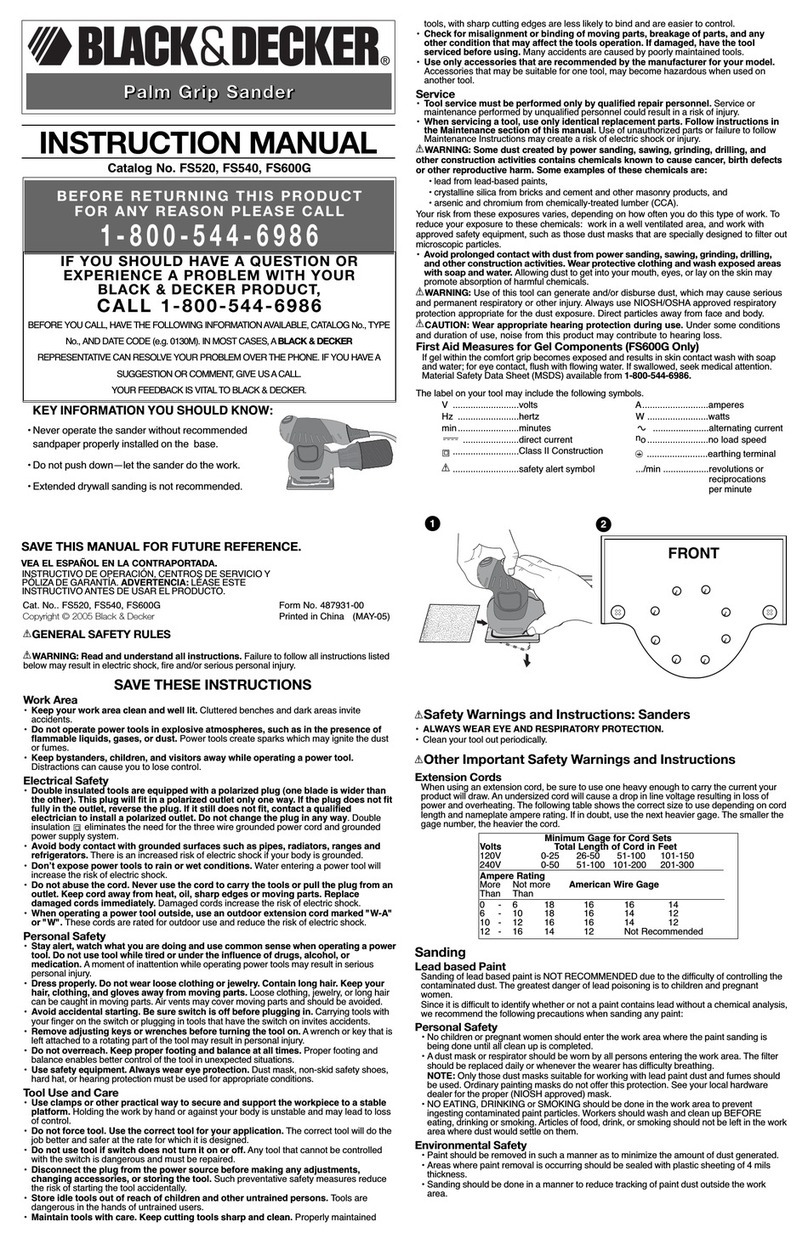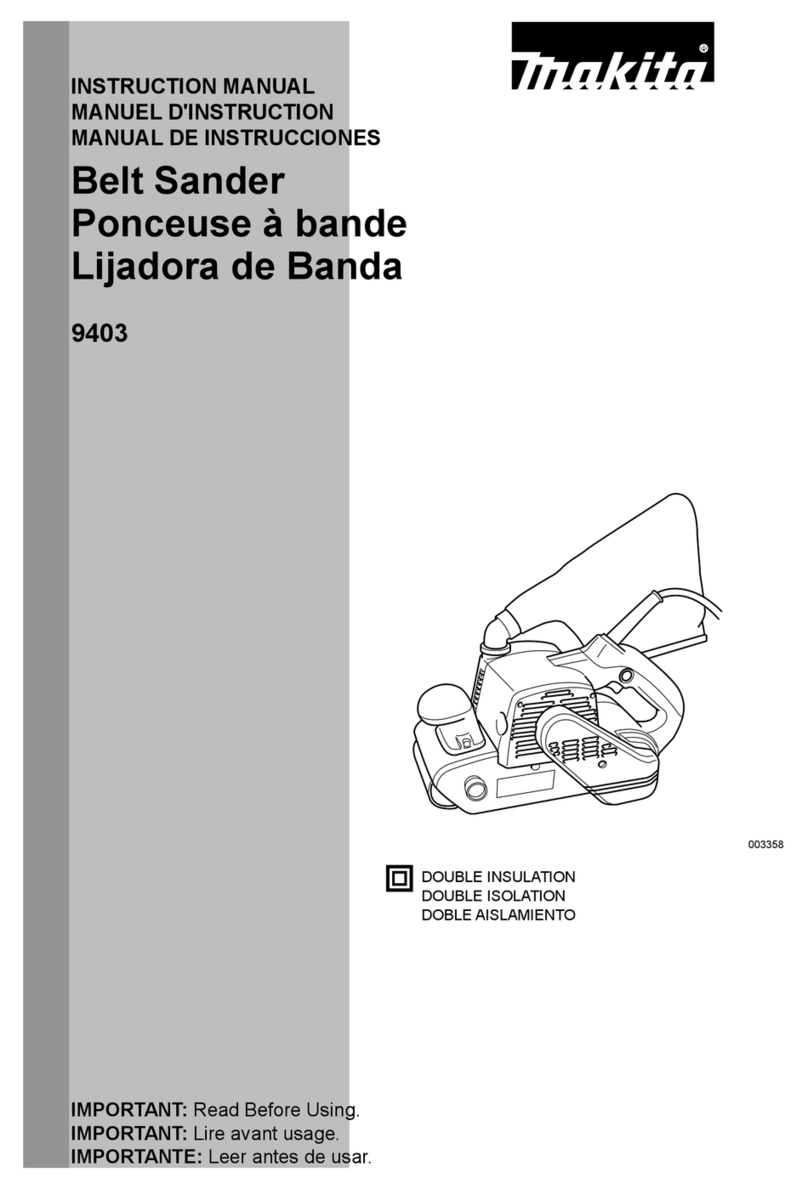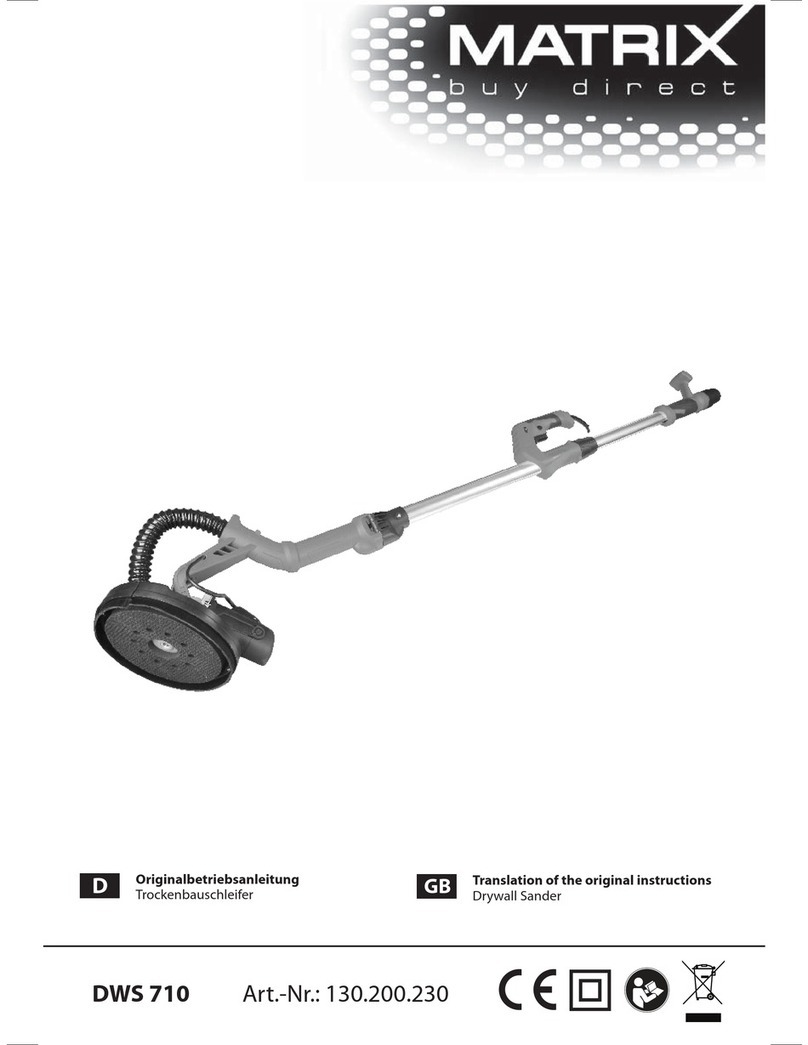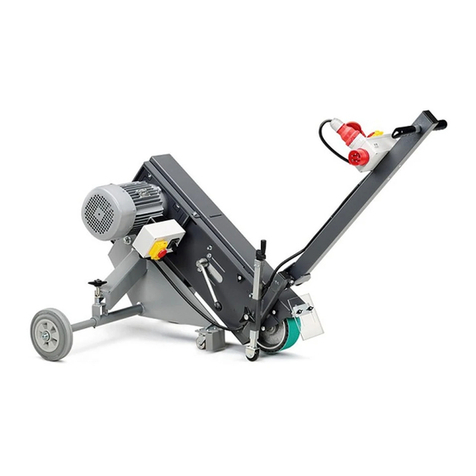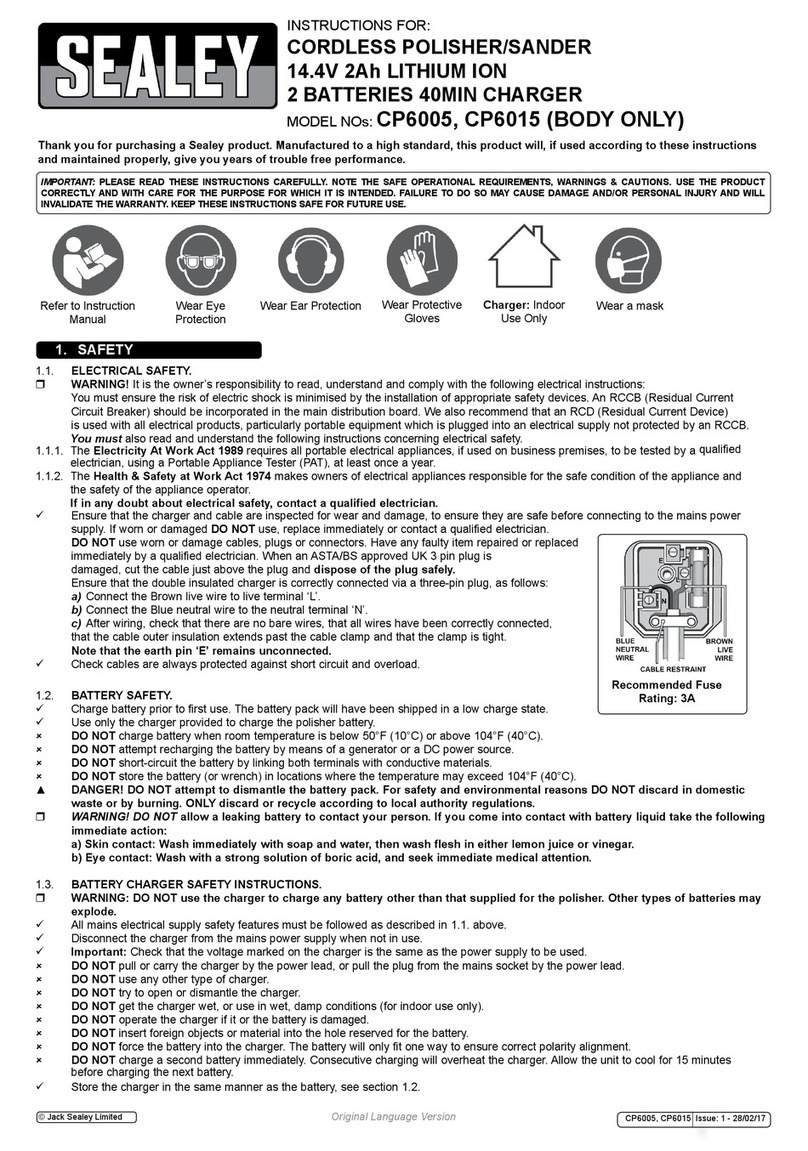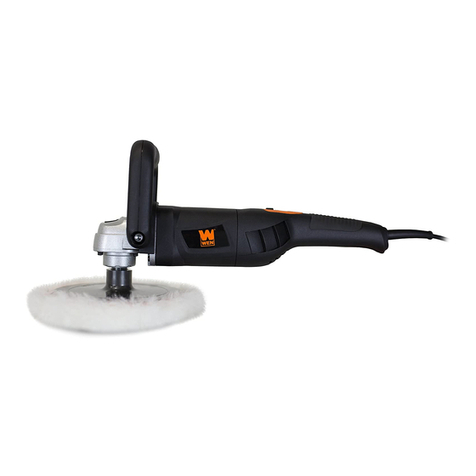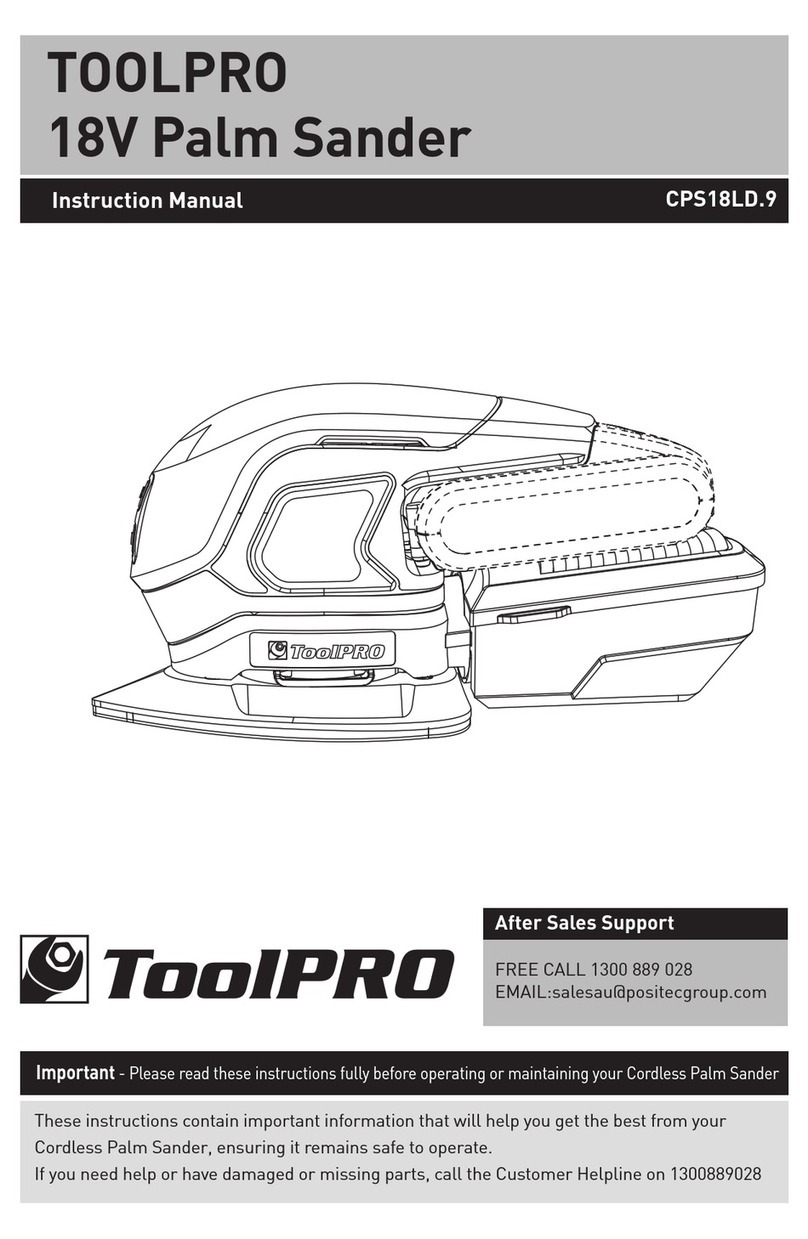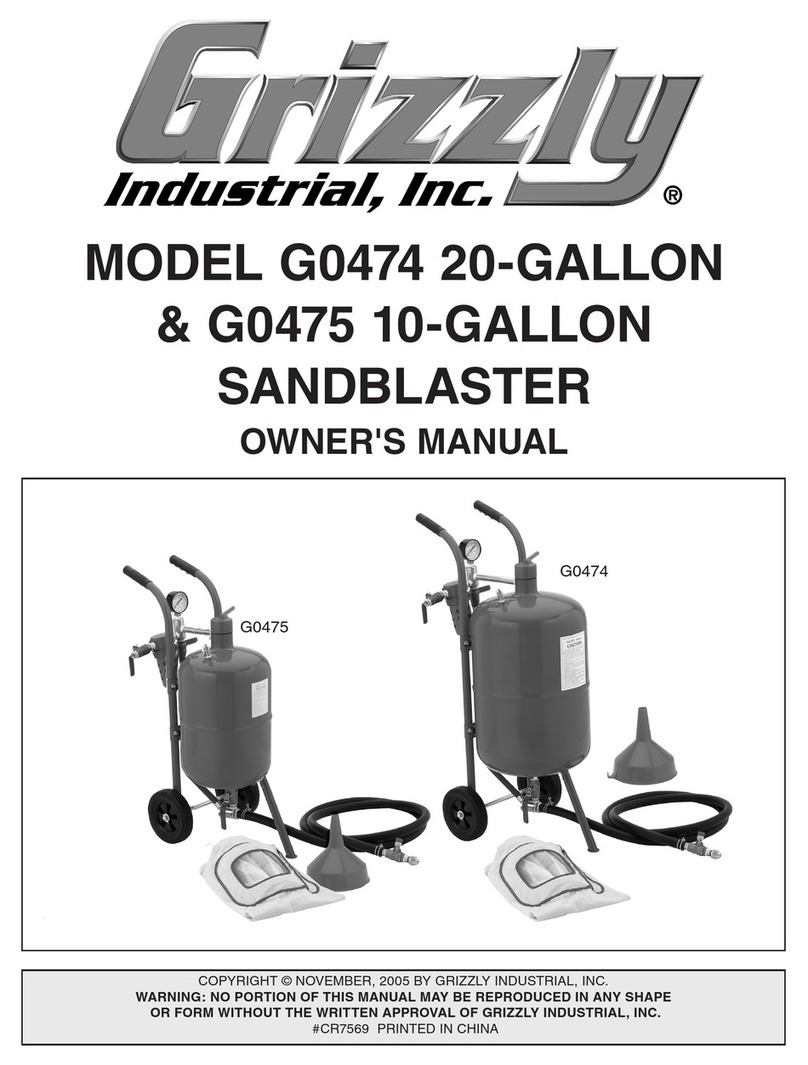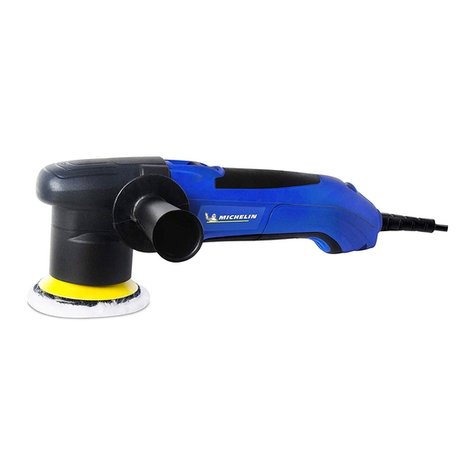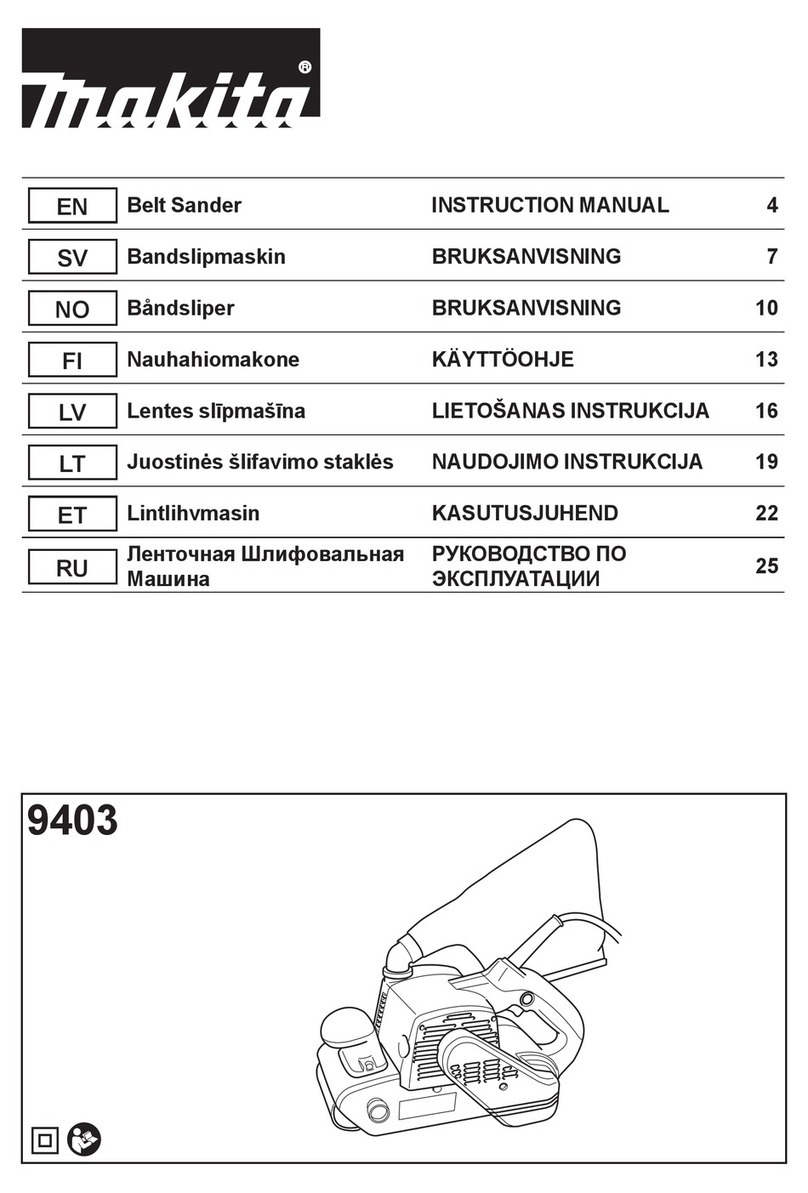Felder FS 700 K Quick guide

Operating instructions
Keep this manual to hand and in good condition for future reference.
Please read this operating manual carefully before using the machine.
Translation of the original operating instructions
FS 700 K
Edge Sander
504032-910, 1, en_GB

©2023
FELDER KG
KR-Felder-Straße 1,A-6060 HALL in Tirol, AUSTRIA
Telephone: +43 5223 5850 0
Email: info@felder-group.com
Internet: www.felder-group.com

3
FS 700 K
Table of contents
Table of contents
1 Information about the manual. . . . . . . . . . . . . . . . . . . . . . . . . . . . . . . . . . . . . . . . . . . . . . . . . . 7
1.1 Symbol legend. . . . . . . . . . . . . . . . . . . . . . . . . . . . . . . . . . . . . . . . . . . . . . . . . . . . . . 7
1.2 Contents of the operating manual. . . . . . . . . . . . . . . . . . . . . . . . . . . . . . . . . . . . . . . . . 7
1.3 Copyright. . . . . . . . . . . . . . . . . . . . . . . . . . . . . . . . . . . . . . . . . . . . . . . . . . . . . . . . . 8
1.4 Liability and warranty. . . . . . . . . . . . . . . . . . . . . . . . . . . . . . . . . . . . . . . . . . . . . . . . . 8
1.5 Training. . . . . . . . . . . . . . . . . . . . . . . . . . . . . . . . . . . . . . . . . . . . . . . . . . . . . . . . . . . 8
2 Safety instructions. . . . . . . . . . . . . . . . . . . . . . . . . . . . . . . . . . . . . . . . . . . . . . . . . . . . . . . . . . . 9
2.1 Intended use. . . . . . . . . . . . . . . . . . . . . . . . . . . . . . . . . . . . . . . . . . . . . . . . . . . . . . . 9
2.2 Making changes and modifications to the machine. . . . . . . . . . . . . . . . . . . . . . . . . . . . . 9
2.3 Responsibilities of the operator. . . . . . . . . . . . . . . . . . . . . . . . . . . . . . . . . . . . . . . . . . . 9
2.4 Requirements of the personnel. . . . . . . . . . . . . . . . . . . . . . . . . . . . . . . . . . . . . . . . . . . 10
2.5 Work safety. . . . . . . . . . . . . . . . . . . . . . . . . . . . . . . . . . . . . . . . . . . . . . . . . . . . . . . . 10
2.6 Personal protective equipment. . . . . . . . . . . . . . . . . . . . . . . . . . . . . . . . . . . . . . . . . . . 10
2.6.1 Prohibitions. . . . . . . . . . . . . . . . . . . . . . . . . . . . . . . . . . . . . . . . . . . . . . . . . . . . . . . . 10
2.6.2 Mandatory safety equipment. . . . . . . . . . . . . . . . . . . . . . . . . . . . . . . . . . . . . . . . . . . 11
2.7 Residual risks. . . . . . . . . . . . . . . . . . . . . . . . . . . . . . . . . . . . . . . . . . . . . . . . . . . . . . . 11
2.7.1 Transport, setup, installation and disposal. . . . . . . . . . . . . . . . . . . . . . . . . . . . . . . . . . . 13
2.7.2 Adjustments tool changes, operation. . . . . . . . . . . . . . . . . . . . . . . . . . . . . . . . . . . . . . 14
2.7.3 Maintain and troubleshoot. . . . . . . . . . . . . . . . . . . . . . . . . . . . . . . . . . . . . . . . . . . . . 15
2.8 Foreseeable misapplications. . . . . . . . . . . . . . . . . . . . . . . . . . . . . . . . . . . . . . . . . . . . 17
3 Declaration of Conformity. . . . . . . . . . . . . . . . . . . . . . . . . . . . . . . . . . . . . . . . . . . . . . . . . . . . . 18
4 Technical information. . . . . . . . . . . . . . . . . . . . . . . . . . . . . . . . . . . . . . . . . . . . . . . . . . . . . . . . . 20
4.1 Dimensions and weight. . . . . . . . . . . . . . . . . . . . . . . . . . . . . . . . . . . . . . . . . . . . . . . . 20
4.2 Operation and storage conditions. . . . . . . . . . . . . . . . . . . . . . . . . . . . . . . . . . . . . . . . 21
4.3 Electrical connection. . . . . . . . . . . . . . . . . . . . . . . . . . . . . . . . . . . . . . . . . . . . . . . . . . 21
4.4 Sanding unit. . . . . . . . . . . . . . . . . . . . . . . . . . . . . . . . . . . . . . . . . . . . . . . . . . . . . . . 22
4.5 Storage conditions of the sanding belts. . . . . . . . . . . . . . . . . . . . . . . . . . . . . . . . . . . . . 23
4.6 Dust extraction. . . . . . . . . . . . . . . . . . . . . . . . . . . . . . . . . . . . . . . . . . . . . . . . . . . . . . 23
4.7 Dust emission. . . . . . . . . . . . . . . . . . . . . . . . . . . . . . . . . . . . . . . . . . . . . . . . . . . . . . . 23
4.8 Noise emission. . . . . . . . . . . . . . . . . . . . . . . . . . . . . . . . . . . . . . . . . . . . . . . . . . . . . 23
5 Machine overview. . . . . . . . . . . . . . . . . . . . . . . . . . . . . . . . . . . . . . . . . . . . . . . . . . . . . . . . . . . 25
5.1 Overview. . . . . . . . . . . . . . . . . . . . . . . . . . . . . . . . . . . . . . . . . . . . . . . . . . . . . . . . . 25
5.2 Pictograms, signs and labels. . . . . . . . . . . . . . . . . . . . . . . . . . . . . . . . . . . . . . . . . . . . 26
5.3 Information on the machine data plate. . . . . . . . . . . . . . . . . . . . . . . . . . . . . . . . . . . . . 27
5.4 Operation and display elements. . . . . . . . . . . . . . . . . . . . . . . . . . . . . . . . . . . . . . . . . . 27
5.5 Sanding belt cover. . . . . . . . . . . . . . . . . . . . . . . . . . . . . . . . . . . . . . . . . . . . . . . . . . . 28
6 Transporting, packing, storing. . . . . . . . . . . . . . . . . . . . . . . . . . . . . . . . . . . . . . . . . . . . . . . . . . 29
6.1 Transport inspection. . . . . . . . . . . . . . . . . . . . . . . . . . . . . . . . . . . . . . . . . . . . . . . . . . 29
6.2 Packaging. . . . . . . . . . . . . . . . . . . . . . . . . . . . . . . . . . . . . . . . . . . . . . . . . . . . . . . . . 29

4
Table of contents
6.3 Storage. . . . . . . . . . . . . . . . . . . . . . . . . . . . . . . . . . . . . . . . . . . . . . . . . . . . . . . . . . . 29
6.4 Unloading / transport. . . . . . . . . . . . . . . . . . . . . . . . . . . . . . . . . . . . . . . . . . . . . . . . . 30
6.5 Means of transportation. . . . . . . . . . . . . . . . . . . . . . . . . . . . . . . . . . . . . . . . . . . . . . . 30
6.5.1 Transport with a pallet truck. . . . . . . . . . . . . . . . . . . . . . . . . . . . . . . . . . . . . . . . . . . . 30
6.5.2 Transport with a forklift truck. . . . . . . . . . . . . . . . . . . . . . . . . . . . . . . . . . . . . . . . . . . . 31
6.5.3 Transport with a crane. . . . . . . . . . . . . . . . . . . . . . . . . . . . . . . . . . . . . . . . . . . . . . . . 32
6.5.4 Transport with a rolling carriage. . . . . . . . . . . . . . . . . . . . . . . . . . . . . . . . . . . . . . . . . 33
7 Setup and installation. . . . . . . . . . . . . . . . . . . . . . . . . . . . . . . . . . . . . . . . . . . . . . . . . . . . . . . . 34
7.1 Space requirement. . . . . . . . . . . . . . . . . . . . . . . . . . . . . . . . . . . . . . . . . . . . . . . . . . . 34
7.2 Levelling the machine. . . . . . . . . . . . . . . . . . . . . . . . . . . . . . . . . . . . . . . . . . . . . . . . . 34
7.3 Install. . . . . . . . . . . . . . . . . . . . . . . . . . . . . . . . . . . . . . . . . . . . . . . . . . . . . . . . . . . . 36
7.3.1 Mount the extraction connection. . . . . . . . . . . . . . . . . . . . . . . . . . . . . . . . . . . . . . . . . 36
7.3.2 Mount and set the support table. . . . . . . . . . . . . . . . . . . . . . . . . . . . . . . . . . . . . . . . . 37
7.4 Attach the dust extraction hose. . . . . . . . . . . . . . . . . . . . . . . . . . . . . . . . . . . . . . . . . . . 39
7.5 Connect electrics. . . . . . . . . . . . . . . . . . . . . . . . . . . . . . . . . . . . . . . . . . . . . . . . . . . . 40
7.5.1 Connect electrics. . . . . . . . . . . . . . . . . . . . . . . . . . . . . . . . . . . . . . . . . . . . . . . . . . . . 40
8 Adjustments and tool changes. . . . . . . . . . . . . . . . . . . . . . . . . . . . . . . . . . . . . . . . . . . . . . . . . . 43
8.1 Sanding belts. . . . . . . . . . . . . . . . . . . . . . . . . . . . . . . . . . . . . . . . . . . . . . . . . . . . . . . 43
8.2 Change / mount the sanding belt. . . . . . . . . . . . . . . . . . . . . . . . . . . . . . . . . . . . . . . . . 43
8.3 Height adjustment - machine table / support table. . . . . . . . . . . . . . . . . . . . . . . . . . . . . 45
8.4 Adjusting the angle - support table. . . . . . . . . . . . . . . . . . . . . . . . . . . . . . . . . . . . . . . . 46
8.5 Adjust sanding unit inclination angle. . . . . . . . . . . . . . . . . . . . . . . . . . . . . . . . . . . . . . . 49
8.6 Extending the machining area (long workpieces). . . . . . . . . . . . . . . . . . . . . . . . . . . . . . 50
8.7 Sanding belt oscillation on / off. . . . . . . . . . . . . . . . . . . . . . . . . . . . . . . . . . . . . . . . . . 50
9 Use. . . . . . . . . . . . . . . . . . . . . . . . . . . . . . . . . . . . . . . . . . . . . . . . . . . . . . . . . . . . . . . . . . . . . . 52
9.1 Switch on the machine. . . . . . . . . . . . . . . . . . . . . . . . . . . . . . . . . . . . . . . . . . . . . . . . 52
9.2 Switch off / Emergency stop. . . . . . . . . . . . . . . . . . . . . . . . . . . . . . . . . . . . . . . . . . . . 53
9.3 Processing workpieces. . . . . . . . . . . . . . . . . . . . . . . . . . . . . . . . . . . . . . . . . . . . . . . . 53
9.3.1 Working positions. . . . . . . . . . . . . . . . . . . . . . . . . . . . . . . . . . . . . . . . . . . . . . . . . . . 53
9.3.2 Authorised working methods. . . . . . . . . . . . . . . . . . . . . . . . . . . . . . . . . . . . . . . . . . . . 54
9.3.3 Prohibited working methods. . . . . . . . . . . . . . . . . . . . . . . . . . . . . . . . . . . . . . . . . . . . 54
9.3.4 Sanding on the longitudinal side of the machine. . . . . . . . . . . . . . . . . . . . . . . . . . . . . . 55
9.3.5 Sanding with tilted unit. . . . . . . . . . . . . . . . . . . . . . . . . . . . . . . . . . . . . . . . . . . . . . . . 56
9.3.6 Sanding of long workpieces. . . . . . . . . . . . . . . . . . . . . . . . . . . . . . . . . . . . . . . . . . . . 57
9.3.7 Sanding curves. . . . . . . . . . . . . . . . . . . . . . . . . . . . . . . . . . . . . . . . . . . . . . . . . . . . . 58
10 Maintenance. . . . . . . . . . . . . . . . . . . . . . . . . . . . . . . . . . . . . . . . . . . . . . . . . . . . . . . . . . . . . . . 60
10.1 Maintenance schedule. . . . . . . . . . . . . . . . . . . . . . . . . . . . . . . . . . . . . . . . . . . . . . . . 60
10.2 Clean the machine. . . . . . . . . . . . . . . . . . . . . . . . . . . . . . . . . . . . . . . . . . . . . . . . . . . 60
10.3 Clean the sanding belt. . . . . . . . . . . . . . . . . . . . . . . . . . . . . . . . . . . . . . . . . . . . . . . . 61

5
FS 700 K
Table of contents
10.4 Lubricate the height and tilt spindle. . . . . . . . . . . . . . . . . . . . . . . . . . . . . . . . . . . . . . . . 62
10.5 Sanding belt support - Change the graphite sliding mesh. . . . . . . . . . . . . . . . . . . . . . . . . 64
11 Troubleshooting. . . . . . . . . . . . . . . . . . . . . . . . . . . . . . . . . . . . . . . . . . . . . . . . . . . . . . . . . . . . . 66
11.1 What to do in the event of malfunctions. . . . . . . . . . . . . . . . . . . . . . . . . . . . . . . . . . . . . 66
11.2 What to do after rectifying the fault. . . . . . . . . . . . . . . . . . . . . . . . . . . . . . . . . . . . . . . 66
11.3 Adjust the sanding belt height. . . . . . . . . . . . . . . . . . . . . . . . . . . . . . . . . . . . . . . . . . . 66
11.4 Faults, causes and repairs. . . . . . . . . . . . . . . . . . . . . . . . . . . . . . . . . . . . . . . . . . . . . . 71
11.4.1 Fault with the sanding belt controls. . . . . . . . . . . . . . . . . . . . . . . . . . . . . . . . . . . . . . . . 71
12 Attachment. . . . . . . . . . . . . . . . . . . . . . . . . . . . . . . . . . . . . . . . . . . . . . . . . . . . . . . . . . . . . . . . 73
12.1 About spare parts. . . . . . . . . . . . . . . . . . . . . . . . . . . . . . . . . . . . . . . . . . . . . . . . . . . . 73
12.2 Disposal. . . . . . . . . . . . . . . . . . . . . . . . . . . . . . . . . . . . . . . . . . . . . . . . . . . . . . . . . . 74

6
Table of contents

7
FS 700 K
Information about the manual
1 Information about the manual
1.1 Symbol legend
Safety instructions
Safety instructions in this manual are indicated with symbols. The safety instruc-
tions are introduced by key words which state in words the extent of the hazard.
Comply with safety instructions under all circumstances, and act with care in order
to avoid accidents, personal injury, or material damage.
DANGER
… indicates a situation of immediate danger which will result in
death or severe injuries if it is not avoided.
WARNING
… indicates a situation of possible danger which can result in
death or severe injuries if it is not avoided.
CAUTION
… indicates a situation of possible danger which can result in
minor or slight injuries if it is not avoided.
NOTICE
… indicates a situation of possible danger which can result in
material damages if it is not avoided.
Tips and recommendations
… emphasises useful tips and recommendations as well as infor-
mation for efficient and trouble-free operation.
OK / NOK
Symbols Explanation
Result is okay.
Result is not okay.
Procedure when troubleshooting.
1.2 Contents of the operating manual
●This operating manual describes the safe and proper use of the machine.
●All instructions in this manual must be strictly followed without exception.

8
Information about the manual
●The operating manual is an integral part of the machine. It must therefore be
kept in the direct vicinity of the machine and be accessible at all times.
●The operating manual must always accompany the machine.
1.3 Copyright
●This instruction manual is to be treated as confidential. It is intended solely
for those people who are to work on or with the machine.
●All descriptions, texts, drawings, photos and other depictions are protected
by copyright and other commercial laws.
●Any unauthorised use is prohibited.
●This manual, in its entirety or parts thereof, may not be transferred to
third parties or copied in any way or form, and its contents may not be
used or otherwise communicated without the express written consent of the
manufacturer. Infringement of these rights may lead to a claim for compensa-
tion. The right to further claims is reserved.
●We reserve all rights in exercising commercial protection laws.
1.4 Liability and warranty
●The contents and instructions in this manual have been compiled in consider-
ation of current regulations and state-of-the-art technology as well as based
on our know-how and experience acquired over many years.
●The manufacturer shall not be liable for damage and/or faults resulting from
the disregard of instructions in the manual.
●The text and images do not necessarily represent the exact product that has
been delivered. The images and graphics are not depicted on a 1:1 scale.
The product that has been delivered, may have custom-built specifications,
add-on options or recent technical modifications and may therefore deviate
from the descriptions, instructions and images contained in the manual.
●We reserve the right to make technical changes to the product in order to
improve the properties of use and further product development.
●The guarantee period is in accordance with national guidelines. Details may
be found on our website, www.felder-group.com.
●Should any questions arise, please contact the manufacturer.
1.5 Training
●All those appointed to work on or with the machine must have fully read and
understood the manual before commencing any work. This requirement must
be met even if the appointed person is familiar with the operation of such a
machine or a similar one, or has been trained by the manufacturer.
●Knowledge about the contents of this manual is a prerequisite for protecting
personnel from hazards and avoiding mistakes so that the machine may be
operated in a safe and trouble free manner.
●It is recommended that the operator requests proof from the personnel that
the contents of the manual have been read and understood.

9
FS 700 K
Safety instructions
2 Safety instructions
2.1 Intended use
●The machine described in this manual is intended solely for the processing
of wood, synthetic materials, and similar machinable materials. Operational
safety is only guaranteed when the machine is used for the intended pur-
poses.
●Any use, other than that of the machine‘s intended purpose shall be consid-
ered improper and is therefore not permitted. All claims regarding damage
resulting from improper use that are made against the manufacturer and its
authorised representatives will be rejected.
●The operator is solely liable for any damage that results from improper use
of the machine.
●The term “proper use” also refers to correctly observing the operating con-
ditions as well as the specifications and instructions in this manual. The
machine may only be operated with parts and accessories recommended by
the manufacturer.
2.2 Making changes and modifications to the machine
●In order to avoid potential hazards and to ensure optimum performance, no
modifications, alterations or changes may be made to the machine that have
not been explicitly approved by the manufacturer.
●All the pictograms, signs and labels affixed to the machine must be kept
visible, readable and may not be removed.
●Pictograms, signs and labels that have become damaged or unreadable
must be replaced promptly.
2.3 Responsibilities of the operator
●The machine may only be operated if it is in proper working order and in
safe condition.
●The general condition of the machine must be checked and the machine
must be inspected for visible defects each time before it is switched on.
●Do not leave the machine running unattended.
●Secure the switched-off machine against unauthorised operation (padlock on
the main switch, remove the key from the operating mode selector switch,
block off the area around the machine, pull out the mains plug etc.).
●In addition to the safety advice and instructions specified in this operating
manual, any local accident prevention regulations and general safety regula-
tions applicable to the machine's area of use, as well as any applicable
environmental protection regulations, must be observed and complied with.
●The operator and designated personnel are responsible for the trouble-free
operation of the machine as well as for clearly establishing who is in charge
of installing, servicing, maintaining and cleaning the machine. Keep children
away from machines, tools and accessories.

10
Safety instructions
2.4 Requirements of the personnel
●Only authorised and trained personnel may work on and with the machine.
"Qualified personnel" is a term that refers to those who – due to their
professional training, know-how, experience, and knowledge of relevant reg-
ulations – are in a position to assess delegated tasks and recognise potential
risks.
●Personnel must be briefed about all functions and potential dangers of the
machine.
●If the personnel lack the necessary knowledge for working on or with the
machine, they must be trained. Responsibility for working with the machine
(installation, service, maintenance, overhaul) must be clearly defined and
strictly observed.
●Only those people who can be expected to carry out their work reliably may
be given permission to work on or with the machine.
●Personnel must refrain from working in ways that could harm others, the
environment or the machine itself.
●It is absolutely forbidden for anyone who is under the influence of drugs,
alcohol or reaction-impairing medication to work on or with the machine.
●When appointing personnel to work on the machine, it is necessary to
observe all local regulations regarding age and professional status.
●The machine may only be operated by an adult, that is without mental
limitations or under the supervision of such a person.
●All operators must ensure that unauthorised persons are kept at a safe dis-
tance from the machine.
●Personnel are obliged to immediately report any irregularities with the
machine that might compromise safety to the operator.
2.5 Work safety
●Following the safety advice and instructions given in this manual can prevent
bodily injury and material damage while working on and with the machine.
●Failure to observe these instructions can lead to bodily injury and damage to
or destruction of the machine.
●Disregard of the safety advice and instructions given in this manual as well
as the accident prevention regulations and general safety regulations appli-
cable to the operative range of the machine shall release the manufacturer
and their authorised representatives from any liability and from any compen-
sation claims.
2.6 Personal protective equipment
2.6.1 Prohibitions
When working on or with the machine, the following must be strictly observed:
Please note
Long, loose hair is forbidden.
With long hair and beards a hair net must be worn.

11
FS 700 K
Safety instructions
Please note
It is prohibited to wear gloves whilst working with the machine.
It is only allowed to wear gloves whilst carrying out tool changes and
maintenance work.
2.6.2 Mandatory safety equipment
When working on or with the machine, the following must always be worn by
personnel:
Please note
Protective clothes:
Sturdy, tight-fitting clothing (tear-resistant, no wide sleeves, no rings or
other jewellery).
Protective footwear:
To protect feet from heavy falling objects and prevent from slipping
on slippery floors.
Ear protection:
To protect against loss of hearing.
Safety glasses:
Protection to prevent damage to eyes.
Respiratory mask:
To protect against dust
2.7 Residual risks
The machine has undergone a hazard analysis. The design and construction
of the machine are based on the results of this analysis and correspond to state-
of-the-art technology. The machine is considered operationally safe when used
properly. Even if the safety measures are complied with, there are still certain
associated risks that must be considered when working on the machine.
Generally applicable residual risks
●Crushing by being caught between moving parts.
○Do not reach into the area of moving parts.
●Whilst processing, sparks can be created.
○Carefully inspect workpieces for foreign matter (nails, screws) which
might impair processing.
●Hearing damage caused by noise intensity. Hearing protection must always
be worn.
●Risk of damage to health from dust especially when processing hard woods.
○Connect the dust extraction system in accordance with the instructions
and make sure that it is working properly.
●Injury from flying workpieces and parts of the workpieces.
●Cut or crush injuries, when changing the tools.

12
Safety instructions
●Injury caused through being crushed, cut, caught or bumped into.
●Before switching on the machine, always check to make sure that there are
no other persons in the immediate vicinity of the machine.
●In the event of power supply failure, the machine will coast to a stop without
applying the brakes (no electric brake action).
It takes longer than normal for tools to come to a stop.
○Do not reach into the area of rotating tools.
Disorder at the workplace
Loose objects or objects that are lying around can cause severe injuries.
●Ensure that there is sufficient space to work around the machine.
●Remove loose objects from the working area.
●Keep the work area orderly and clean.
Insufficient lighting of the installation site
Serious injuries
●Light installation site sufficiently.
Standing on the machine
The covers or projecting components of the machine are not suitable for standing
on them. If the machine falls down, severe breaks can occur.
●It is forbidden to climb onto the machine.
Decommissioned safety devices
The machine is equipped with diverse protective devices with safety function.
When protective devices are decommissioned, the safety function is no longer
ensured. Decommissioned safety devices can cause severe injury.
●Do not deactivate or bypass protective devices.
Damage to electrical components or their insulation
Damaged electrical components or damage to their insulation cause deadly elec-
tric shocks.
●Work on electrical fittings may only be carried out by qualified personnel
and in strict observance of the safety instructions.
●Disconnect machine from power supply and secure against restarting before
carrying out work at electrical devices.

13
FS 700 K
Safety instructions
2.7.1 Transport, setup, installation and disposal
Improper transport
Improper transport can cause the machine to tilt or fall. This can cause severe
crushing.
●Carry out transport according to the specifications in this instruction.
●Transport the machine as carefully as possible. Avoid mechanical vibration.
●Keep enough distance to the machine during transport.
●Move unauthorised people out of the area.
●Always clean and tidy the work area and cordon it off.
●Ensure that there is room to escape should the machine fall.
●Only use suitable lifting gear that has a sufficient load-carrying capacity.
●Chains, belts, ropes or other hoisting devices must be equipped with safety
hooks.
●Do not use any torn, frayed or knotted chains, belts or ropes.
●Ensure that chains, belts and ropes do not lie against sharp edges.
●Only attach lifting equipment to the attachment points provided. Never lift
the machine by its protruding parts.
●Keep the machine's centre of gravity in consideration.
●Take measures to prevent the machine from slipping.
●Never lift loads over a person.
●Do not stand below suspended loads.
Incorrect setup and installation
Serious injuries and material damage.
●Machine may only be set up by authorised, trained personnel who are
familiar with how to operate the machine and are in strict observance of all
safety instructions.
●Before assembling and installing the machine, check to make sure it is com-
plete and in good condition.
●Only assemble and install the machine if the machine and all of the parts
are complete and intact.
●Do not setup machine in areas with high electromagnetic fields.
●Keep the work area orderly and clean. Components and tools that are not
put in their correct place or put away may be the cause of accidents!
●Do not setup machine on escape routes.
●Only place machine within buildings.
●Place the machine on a level, sufficiently stable, non-slip and vibration-free
surface.
●The foundation must comply with the norms stipulated in the technical lay-
outs.
●Use safety equipment according to regulations and check for proper func-
tion.
●The load bearing capacity, the coating and the surface of the floor must not
be affected in the long term.
●The working area must be adequately lit.

14
Safety instructions
Electrostatic charging of the extraction hoses
Burns or electric shock caused by unearthed, or low quality extraction hose.
●Always ensure continuous electrostatic earthing when connecting machines.
●Only use dust extraction hose approved by the manufacturer.
Indirect touch with residual currents
Deadly electric shocks
●Equip the machine's supply line with a fault-current circuit breaker.
2.7.2 Adjustments tool changes, operation
Improper adjustment and setup
Serious physical injury or material damage.
●Adjustment and setup may only be carried out by authorised, trained per-
sonnel who are familiar with how to operate the machine and are in strict
observance of all safety instructions.
●Before beginning any maintenance work on the machine, switch it off and
secure it against accidentally being switched on again.
●Adjustments to the machine or changing the tools may only be done once
the machine has stopped.
●Before commencing any work with the machine, inspect it to ensure that it is
complete and in technically good condition.
●Ensure that there is sufficient space to work around the machine.
●Keep the work area orderly and clean. Components and tools that are loose
or not put in their correct place may cause accidents.
●Attach safety equipment according to regulations and check for proper func-
tion.
Deactivated or defective protective devices
Serious injuries
●The safety equipment required for processing must be in good working con-
ditions and properly maintained. Check all required safety devices to ensure
good working condition.
●Do not switch off, circumvent or remove protective and safety devices during
operation.
Large or small workpieces
Serious injuries
●Ensure that there is sufficient space to work around the machine.
Drive fed workpieces could be a hazard when processing. Keep sufficient
distance from walls, machines and fixed objects.
●Support long workpieces with additional supports (e.g. table extensions,
roller supports).
●Use auxiliary equipment for machining short and narrow workpieces (e.g.
push grip, pushing stick, workpiece holder).
●Only process workpieces that can be safely placed on the machine and
guided.

15
FS 700 K
Safety instructions
Foreign objects in the workpiece
Serious injuries
●Carefully inspect workpieces for foreign matter (nails, screws) which might
impair processing.
During operation
Serious injuries
●Keep the work area orderly and clean. Components and tools that are loose
or not put in their correct place may cause accidents.
●Offcuts or other parts of the workpiece must not be removed from the
working area whilst the machine is still running.
●Injury from flying workpieces and parts of the workpieces (e.g. knots, off-
cuts).
●Do not lean over the working area.
●Only remove chips when the machine is at a standstill. No program may be
loaded / executed.
Surpassing or falling below the allowed ambient temperature
Surpassing or falling below the allowed temperatures can cause malfunctions of
the machine and unpredictable machine movements, which can lead to severe
personal and material damage.
●Only operate machine within the listed temperature range.
Dust deposits
Dust build-ups can ignite when in contact with hot parts or cause an explosive
atmosphere due to resuspension. Fire or explosion events can cause serious inju-
ries.
●Clean production area as needed.
●Open fire, smoking and cleaning with compressed air forbidden.
●Only carry out spark-producing work and hot work after work release
process.
2.7.3 Maintain and troubleshoot
Improper operation of the machine
Serious injuries
●Work on the machine may only be carried out by authorised, trained per-
sonnel who are familiar with how to operate the machine and are in strict
observance of all safety instructions.
●If possible, only perform work when the machine is disconnected from all
energy sources and an unintentional restart is prevented.
●The machine has to be switched off when carrying out any work on the
machine.
●Disconnect machine from power supply before carrying out work on elec-
trical devices.
●Do not deactivate or bypass protective devices.

16
Safety instructions
Improper work at the electrical units
Deadly electric shocks
●Work on electrical fittings may only be carried out by qualified personnel
and in strict observance of the safety instructions.
●Disconnect machine from power supply and secure against restarting before
carrying out work at electrical devices.
Improper maintenance
Serious injuries
●Machine may only be maintained by authorised, trained personnel who are
familiar with how to operate the machine and are in strict observance of all
safety instructions.
●If possible, only perform maintenance work when the machine is discon-
nected from all energy sources and an unintentional restart is prevented.
●Disconnect machine from power supply before carrying out work on elec-
trical devices.
●Wait for all the moving parts to come to a standstill.
●Maintenance technicians need to be fully aware of how the machine
operates and moves, and they must be familiar with the exact operating
sequence.
●Whilst maintenance work is being carried out, secure the area around the
machine.
●Whilst maintenance work is being carried out, put up a sign that states
"Machine under maintenance".
●To ensure quick and unmistakable communication, visual contact with the
operators must be kept at all times.
●Operators should repeat and confirm instructions before they are carried out.
●Only start the machine when there is no one within the safety zone.
●Properly reinstall all components after the maintenance work and check the
functionality.
●As part of the machine maintenance, the whole machine, including the
safety devices, must be checked regularly for damage.
●Keep a record of all maintenance work.
Exceeding the lifespan of protective devices that carry out a safety function
Serious injuries
The safety devices have a lifespan of 20 years. If safety devices are used
exceeding their lifespan, the proper function of the safety devices can not be
guaranteed. Deficiently maintained safety devices can cause severe injury.
●Safety devices have to be replaced by expert personnel from Felder Group
before the end of the lifespan.
Improper replacement or reparation of safety devices with safety function
Serious injuries
●Only let safety devices be replaced or repaired by expert personnel of the
Felder Group.

17
FS 700 K
Safety instructions
Improper correction of malfunctions
Serious injuries
●Wait for all parts to be still.
●Disconnect machine from all energy sources and secure against restarting.
2.8 Foreseeable misapplications
The examples given highlight possible dangers. This list makes no claim to com-
pleteness.
This information is intended to enable users to assess hazards and risks.
General misuse
●Disregarding operating instructions.
●Operating the machine, even if the operation manual is not complete or is
not available in the language of the country it is being operated in.
●Placing objects or tools on the work surface.
●Use of tools or materials which are not intended for processing on the
machine.
●Inserting tools that are either not allowed, or not authorised in the machine.
●Using modified tools.
●Using spare parts, accessories and equipment that have not been approved
by the manufacturer.
●To change or modify the machine.
●To adapt, remove or bridge the safety equipment.
●Intentionally trigger safety equipment.
●Climbing on the machine.
Misuse during operation
●Operating the machine carelessly.
●Operating the machine without using the appropriate safety equipment.
○Check the correct functioning of the safety equipment regularly.
●Processing of overly large or heavy workpieces.
●Processing very small workpieces without assistance.
○Keep handling accessories at hand.
●Processing of unsuitable materials such as steel.
●Processing workpieces that are not fixed or insufficiently fixed.

18
Declaration of Conformity
3 Declaration of Conformity
EG-Declaration of Conformity according to Machine Guidelines 2006/42/EC
Machine number reference:
The machine number is printed on the cover sheet of the operating manual.
We hereby declare that the machine indicated below, which corresponds to the design and construction of
the model we placed on the market, conforms with the health and safety requirements as stated by the EC
guidelines (see table).
Manufacturer Felder KG
KR-Felder-Straße 1
6060 Hall in Tirol
Product designation Edge Sander
Manufacturer Felder
Model type FS 700 K
The following EC guidelines were applied 2006/42/EC
2014/30/EC
This EC Declaration of Conformity is valid only if the CE label has been affixed to the machine. Modifying
or altering the machine without the express written agreement of the manufacturer shall render the warranty
null and void. The signatory of this statement is the appointed agent for the compilation of the technical
information.
Prof. h.c. Ing. Johann Georg Felder
CEO Felder KG
KR-Felder-Straße 1, A-6060 HALL in Tirol
Date: 1.2.2022

19
FS 700 K
Declaration of Conformity
UKCA - Declaration of Conformity
Declaration of Conformity according to UK Directive S.I. 2008/1597
Machine number reference:
The machine number is printed on the cover sheet of the operating manual.
We hereby declare that the machine indicated below, which corresponds to the design and construction of
the model we placed on the market, conforms with the health and safety requirements as stated by the UK
guidelines (see table).
Manufacturer Felder KG
KR-Felder-Straße 1
6060 Hall in Tirol
Product designation Edge Sander
Manufacturer Felder
Model type FS 700 K
The following UK guidelines were applied S.I. 2008/1597 - Supply of Machinery (Safety) Reg-
ulations 2008
S.I. 2016/1091 - Electromagnetic Compatibility Reg-
ulations 2016
This EC Declaration of Conformity is valid only if the CE label has been affixed to the machine. Modifying
or altering the machine without the express written agreement of the manufacturer shall render the warranty
null and void. The signatory of this statement is the appointed agent for the compilation of the technical
information.
Prof. h.c. Ing. Johann Georg Felder
CEO Felder KG
KR-Felder-Straße 1, A-6060 HALL in Tirol
Date: 1.2.2022

20
Technical information
4 Technical information
4.1 Dimensions and weight
E
C
AB
C1
D
F
Fig. 1: Dimensions
Machine
Data Value Unit
Length (A) 1875 mm
Width (W) 776 mm
Height (C) 1437 mm
Min. - max. working height (C1) 895 - 1024 mm
Machine table width (D) 350 mm
Machine table length (E) 960 mm
Support table length (F) 330 mm
Weight 295 kg
Table of contents
